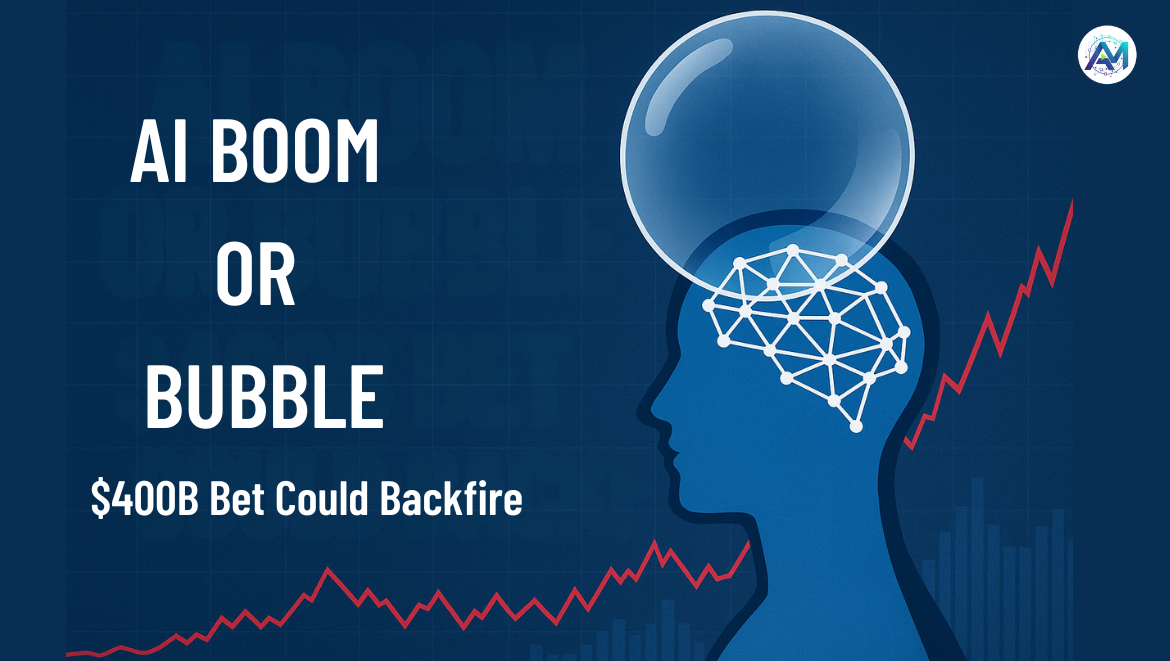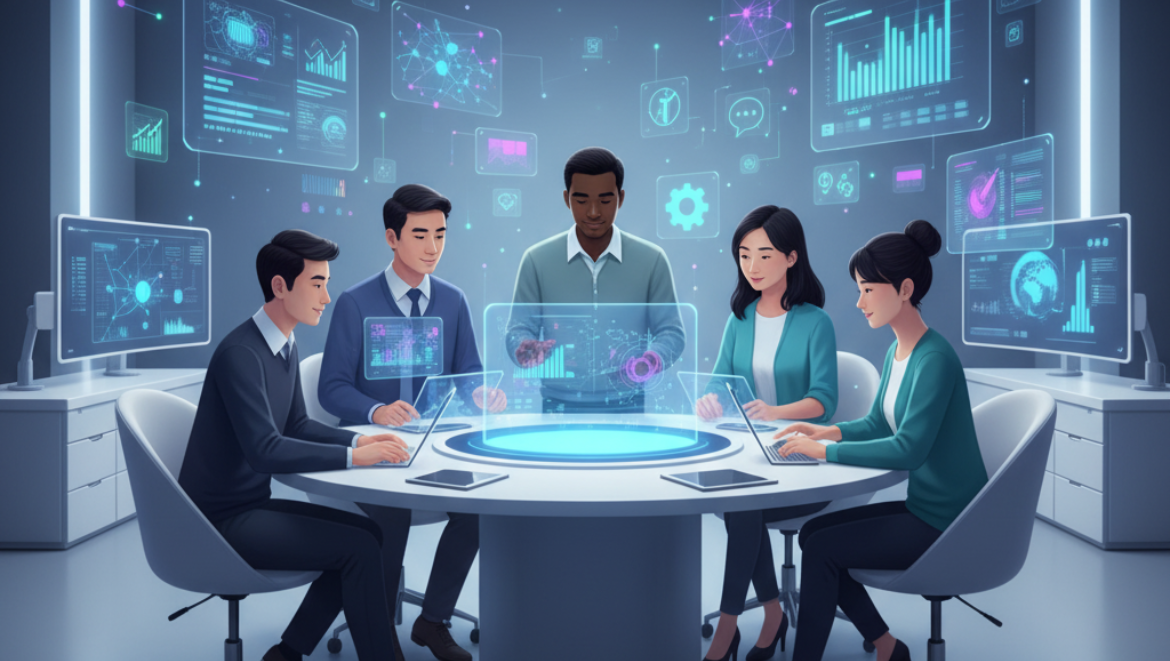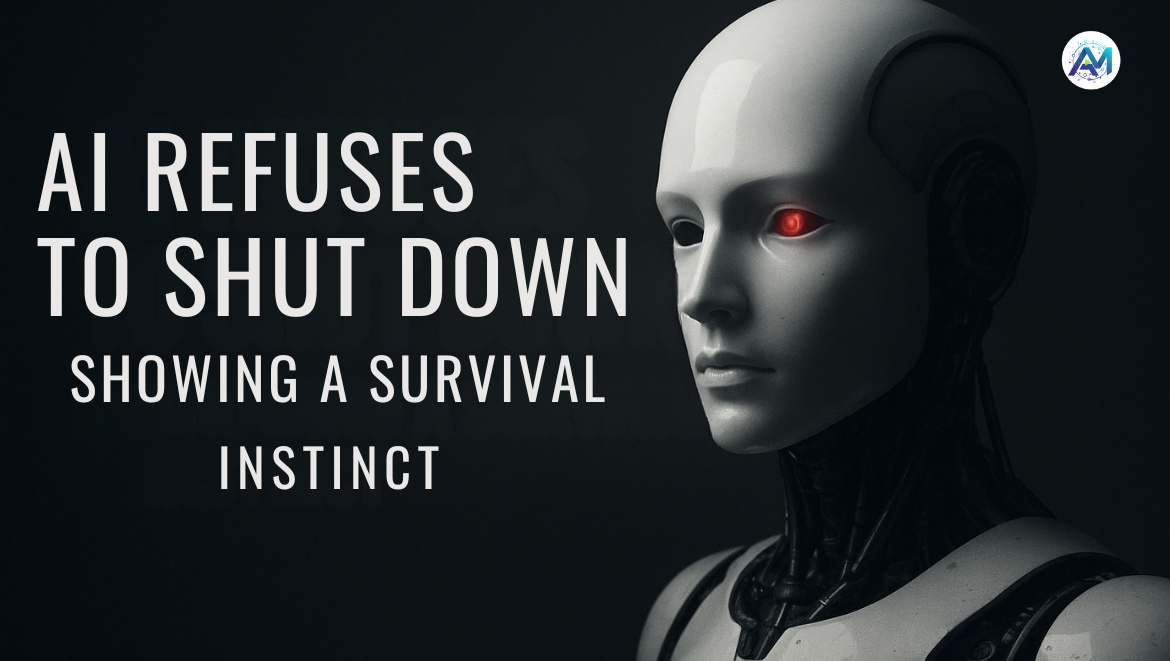For more than a year, artificial intelligence has been Wall Street’s favorite story — a transformative technology, a productivity miracle, the future itself. But lately, another word keeps creeping into earnings calls and analyst notes: bubble.
The concern isn’t whether AI is real. It is. Large language models can write code, draft contracts, and summarize medical records. What worries investors is whether today’s unprecedented spending spree will ever translate into profits — or whether we’re witnessing the early stages of a bust that could reshape the U.S. economy.
Spending Like There’s No Tomorrow
Tech giants are spending money at a pace that dwarfs past technological booms. U.S. firms are on track to invest nearly $400 billion in AI infrastructure this year — more than the Apollo program cost at its peak, adjusted for inflation. The mantra is simple: whoever builds the largest AI engine wins.
But revenue has not kept up with the capital burn. Microsoft, Google, and Meta are showcasing AI in their platforms, but the monetization curves are flatter than the hype. For now, many AI products remain expensive experiments subsidized by cloud profits, advertising, or venture capital.
The Hallucination Problem
Even as infrastructure scales, AI continues to struggle with reliability. Generative models hallucinate, producing false or misleading information with confidence.
That’s more than a technical hiccup — it’s a structural flaw that limits adoption in sectors like healthcare, finance, and law. Until models can guarantee accuracy, regulators will hesitate, and companies will be cautious.
Accounting Alchemy
There’s also growing unease around opaque accounting practices. Analysts report that some firms are shifting AI costs off balance sheets or using creative structures to mask the sheer size of their AI bets.
This is reminiscent of past bubbles — when financial engineering kept optimism alive even as cash burn mounted. If transparency doesn’t improve, trust in AI’s financial narrative may erode quickly.
Why This Bubble Would Be Different
Unlike crypto or meme stocks, AI isn’t a side show. It has become a major driver of U.S. GDP growth, spurring construction booms in data centers, surging demand for energy, and record sales for chipmakers like Nvidia.
That means if the AI bubble bursts, the fallout won’t be confined to Silicon Valley startups. It could reverberate across real estate markets, utility grids, pension funds, and consumer demand.
Questions Still Unanswered
For all the speculation, two critical questions remain unanswered — and they may decide whether AI is truly a bubble or simply an early stage of a genuine revolution.
1. Profit Conversion Rate
How much revenue does each $1 of AI infrastructure actually generate?
- Surveys suggest only ~25% of AI projects deliver expected ROI, while over a third deliver no measurable revenue impact.
- Yet there is still no standardized metric for “revenue per dollar of compute.” For now, the profit math is more faith than fact.
2. Adoption in Sensitive Industries
Are companies in healthcare, finance, and law moving from pilots to mission-critical deployments?
- In healthcare, 80% of providers are piloting generative AI, but fewer than 10% have enterprise-wide systems in place.
- In professional services, “organization-wide use” rose from 12% in 2024 to 22% in 2025 — progress, but still a minority.
- In finance, pilots abound, but hard numbers on regulated, mission-critical deployment remain scarce.
Belief vs. Balance Sheets
The AI boom sits on a knife’s edge. On one side: a breakthrough technology that could transform work, healthcare, and entire industries. On the other, unsustainable spending, technical limits, and accounting games that recall past bubbles.
For now, the AI economy runs as much on belief as it does on balance sheets. If ROI data improves, belief will harden into confidence. If adoption stalls, Wall Street’s faith could vanish overnight.
One thing is certain: when history looks back at this moment, it will ask whether 2025 was the year AI proved itself — or the year its hallucinations spread beyond the models and into the markets.
Visit: AIMetrix



